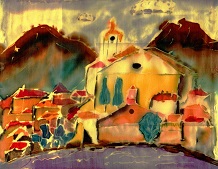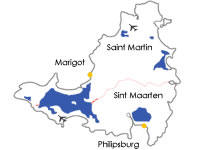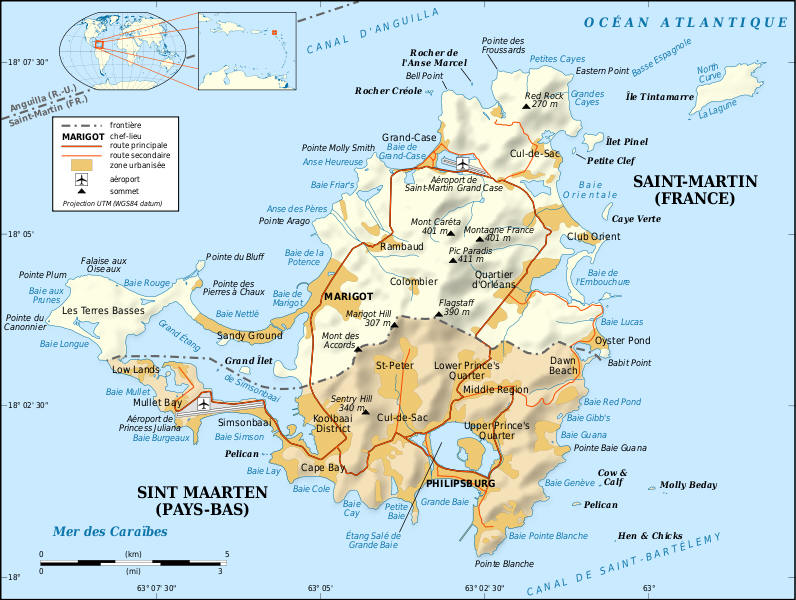 Safaris
Bergsteigen
Wandern
Inselwandern Weltweit
Safaris
Bergsteigen
Wandern
Inselwandern Weltweit
 Europa
Inselwandern
Europa
Inselwandern
 Städtewandern
Städtewandern
 Paintings
Paintings Dirk Rauschenbach
Dirk Rauschenbach
 Safaris
Bergsteigen
Wandern
Inselwandern Weltweit
Safaris
Bergsteigen
Wandern
Inselwandern Weltweit
|
 Europa
Inselwandern
Europa
Inselwandern
|
 Städtewandern
Städtewandern
|
 Paintings
Paintings |
 Dirk Rauschenbach
Dirk Rauschenbach
|
|
zurück Karibik zurück Aida 2010/11 St. Maarten Philpsburg Marigot Maho Beach Bay Red Baie Rouge Airport Princess Juliana
|
|
|
| St. Maarten Philpsburg Marigot | St. Maarten Maho Beach |
|
|
|
| St. Maarten Maho Beach Airport Princess Juliana | St. Maarten Bay Red Baie Rouge |
|
|
Saint-Martin (+ Sint Maarten) ist eine zwischen frankreich und den Nierderlanden geteilte Insel und gehört zur Gruppe der Inseln über dem Wind Leeward islands Die Insel ist der einzige Ort, an dem es – über eine Länge von zehn Kilometern − eine Grenze zwischen dem französischen und dem niederländischen Staatsgebiet gibt.. Der niederländische Teil der Insel hat einen Hafen, an dem Seacruiser anlegen . In der Saison sind dies bis zu zehn Schiffe pro Tag. Eine Besonderheit, welche die Insel vor allem fü r US Bürger attraktiv macht, ist der Status des Freihafens – es werden weder Steuern noch Zoll erhoben. Aufgrund dieser Tatsache entwickelte sich auf der Insel, besonders im kommerzialisierten Sint Maarten, ein regelrechter Tabak- und Spirituosentourismus. Sobald jedoch die letzten Schiffe gegen 18 Uhr abgelegt haben, wirkt beispielsweise Philipsburg wie ausgestorben. Ebenfalls wichtig für die Infrastruktur ist der Flughafen Princess Juliana. Dieser wurde 2006 erneuert und hat unter anderem ein neues Terminal erhalten. Das Straßensystem ist oft mangelhaft, es kommt häufig zu Staus. Dies ist im französischen Teil seltener der Fall. |
| QM 2 |
 St. Martin www.st-martin.org
St. Martin www.st-martin.org
|
|
Der Airport Princess Juliana befindet sich direkt am Strand. Daher fliegen die Flugzeuge B 747 A 340 sehr niedrig über den Strand, der für Touristen freigegeben, aber mit Warnhinweisen ausgestattet ist. Der Abstand zwischen den landenden Flugzeugen und dem Zaun beträgt oft nur einige Meter, Touristen können direkt unter den Flugzeugen stehen und sie fotografieren. Am Strand befindet sich ein Surfbrett, auf das der Flugplan geschrieben wird, der die Flüge ankündigt.Lowest landing in theWorld |
| Les plages de Saint Martin The Beaches
|
Diving spots
1 - Banc Médée - 8m 2 - Sec de Grand Case - 8m 3 - Rocher Créole - 16m 4 - ilet Requin - 16m 5 - Basse Espagnole - 15m 6 - Le remorqueur - 16m 7 - La pointe - 12m 8 - Le circus - 18m 9 - Chico 1 - 22m 10 - Chico 2 - 22m 11 - Coral garden - 22m 12 - Fourche nord - 16m 13 - Fourche est - 12m |
Hotel Liste St- maarteen 1 - Hévéa 2 - Roselys 3 - Sol Hotel Hotels 2 ** 1 - Centr hotel 2 - Chez Martine 3 - Domotel 4 - Frangipanier 5 - Jardins de Chevrise 6 - Marigotel 7 - Soleil de Minuit Hotels 3 *** 1 - Atlantide 2 - Cap Caraïbes 3 - Caravelle Hotel (la) 4 - Caribbean Princess 5 - Club Orient 6 - Colombus 7 - Cosy 8 - Golf Hotel 9 - Grand Case Beach Club 10 - Esplanade 11 - Hoste(l') 12 - Mercure Simpson 13 - Orient Bay Hotel 14 - Palm Court 15 - Patio(le) 16 - Petit Hotel 17 - Pinel Beach 18 - Plantation 19 - Royal Beach 20 - St-Tropez Hotel Hotels 4 **** 1 - Alamanda |
|||
|
A Listing of Marsh and Lagoon Birds
The Great Blue Heron (Ardea herodias) and the Great Egret
(Casmerodius albus) are large migratory wading birds reaching up to 3
ft. that can sometimes be found at l’Etang aux Poissons in French
Quarter.
The Plumed Egret (Egretta thula) is a bit smaller and very common in the Caribbean and in Saint Martin. The Cattle Egret (Bubulcus ibis) is the most common wading bird and it can often be seen in the fields, looking for food near the cattle. At nightfall, these egrets get together to fly back to their night quarters in the mangrove of Simpson Bay or l’Etang aux Poissons. This migratory wading bird () only arrived in South and Central America a few decades ago. It is of African or S-W Asian origin. The Green-Backed Heron (Butorides striatus) can often be found in the marshy areas of mangroves and ponds. It has a beautiful multi-colored plumage, with a silvery green back, reddish cheeks, a green crest and white chin and neck. The Black-Bellied Plover (Pluvialis squatarola) is a migratory bird from North America that lives in flocks on the banks of marshy areas. The same is true of the piping plover (Charadrius vociferus). The Black-Winged Stilt (Himantopus himantopus) is a small wading bird that can often be found in Saint Martin’s salty ponds such as Chevrise, Grand Case, French Quarter, Great Bay, Long Bay or Baie Rouge. Identification markers are the black and white plumage and pink or yellow legs. It lives in flocks and feeds on worms and small crustaceans. It sometimes reproduces in Saint Martin. The White-Cheeked Pinktail (Anas bahamensis) is a small-sized duck, very common in the Caribbean, where it is sedentary. It can sometimes be found in the Lowlands salt ponds, but more often in the fresh water at the entrance of Philipsburg. It can be recognized by its white cheeks and red beak. The Blue-Winged Teal (Anas discors) is a migratory duck from North America that can sometimes be seen in the briny ponds, mangrove and fresh water ponds. The Osprey (Pandion haliaetus) is a large raptor that feeds exclusively on fish, whose « turf » is the vicinity of l’Etang aux Poissons in French Quarter
|
A Listing of Forest Birds
The American Kestrel (Falco sparverius) is the smallest
Caribbean raptor (8-12 in.). It can be commonly seen in Saint Martin, in
flight or perched on a tree and it can be identified by its small size,
yellow belly and striped brown and black back.
The Scaly-Naped Pigeon (Columba squamosa) is a wild pigeon that lives and nests mostly in the humid middle forest, in the heights of Saint Martin. Its burgundy and blue plumage make it hard to see in the forest cover. The Zenaida Dove (Zenaida aurita) is a dove very common in the Lowlands and on the Dutch side, where hunting is prohibited. You may occasionally see them perched on power lines or flying in pairs at nightfall. They reproduce in Saint Martin between February and November. The male and female alternate brooding. The Common Ground-Dove (Columbina passerina) is a small brownish dove (6 in.). It is very common in the Lowlands and especially at Mullet Bay. The Hummingbird is tiny. There are over 20 species in the Caribbean. They often sport a silvery green plumage. They feed essentially on nectar and their thin, curved bill is well adapted to their favorite flower, the Hibiscus. The Sugarbird (Coereba Flaveola) is a small sedentary bird. It is easy to recognize, with its yellow chest, black wings and back and white stripes over the eyes. They feed on flower nectar, small insects and sweet fruit juices. They are very common on Saint Martin, and if you set a cup of sugar outside, they will gather in large numbers.
|
Baie longue / Baie aux prunes
Starting on the West coast, we set out from Pointe du Canonnier, in
the Lowlands Region (Terres Basses) at eastern Point, where we find
Baie Longue followed by Baie aux Prunes, two unspoiled beaches,
relatively deserted except for a few intrepid surfers. This part of
the island is so quiet you may have the beach to yourself.
If you continue on to Baie Rouge, the last beach in the Terres Basses, you will find it less deserted. Get out your masks and flippers to explore the underwater world. Around the rocky point a snorkler’s paradise awaits.
Friars’ Bay / Happy Baie
Further north, a thin strip of road leads you to Nettle Bay area,
washed by the lagoon on one side, the sea on the other. Here, the
beaches are serviced by the many hotels and all kinds of watersports
and activities are available. Perched above the waterfront of Marigot,
Fort Louis overlooks the beach of Galisbay.
Further north, Friar’s Bay faces the island of Anguilla. Well protected from the swells, this beach is a local favourite. Traditionally, once a month, the full moon is celebrated at Friar’s Bay. The Lovers’ Beach is a tiny sandy enclave hidden in the rocky coast of Pointe Arago, so small that it can hold only two people at a time. How to get there is still a mystery for a lot of people.
The Bay of Grand Case
The best restaurants of the island are located by the Bay of Grand Case.
This is a place where you can get a good meal and also have a swim.
Orient Bay
The only thing in common between
Orient Bay,
also called Saint Tropez of the Caribbean and Petite Cayes (the only
way to go is by boat or a twenty-minute walk along the coast) : the
ocean view on Pinel and Tintamarre islands. The first is devoted to
tourism, the latter is still virgin, fringed by eroded limestone
cliffs and clay, which overlooks the sea, where some like to play
Robinson Crusoe.
|
|||
|
Pic Paradis
The highest point of the island: 424m
On the road to Grand Case, halfway between Marigot and Grand Case, road signs point the way to Pic Paradis. At the end of the road you will find a marked trail. At the top you will be rewarded by a 360° panoramic view of Saint Martin and the neighbouring islands.
On the way to Pic Paradis, on your right, do not miss the Lottery
Farm.
Within its mountain landscapes and its rain forest, the Lottery Farm shelters thousands of plant species, all with dream names: mahogany, corossol, mango tree, papaw tree, guavaberry tree, as well as medicinal plants. Many animal species are there too: iguanas, humming birds, monkeys, mongoose, parrots. Far from the sometimes electric atmosphere of the beaches and from the daily activity which prevails on the island, to the visitor who enters this exceptional place it feels like “paradise regained”. There, everything is different: the scents, the sounds or rather the silences, the luxuriant vegetation. Some will be stirred by the spiritual vibrations which prevail at Lottery Farm. These vibrations are carefully maintained by B.J the owner, who respects the memory of the three hundred slaves who, in the 1720s, worked here on the sugar cane plantations. B.J. took over the site with one objective: to protect this place from any human activity which could damage it or disturb its peace. Only a wooden “carbet”, at the starting point of the walk, houses a restaurant where hikers can relax or eat, at lunch time, from Tuesday to Sunday and at dinner time from Tuesday to Saturday. In high season, on Saturdays and Sundays, jazz bands accompany the aperitif hour. Tree-top adventure trail: at Lottery Farm
|
loteriefarm.net
|
Forest Hiking Choose your trail from Loterie's extensive Hiking Trail Network. Discover the lush tropical terrain whether that be via the canyon, the running source, Chubakera viewpoint or just hike up to Pic Paradise, 1490ft to the peak. Mother Nature created this reserve, Loterie Farm made it accessible. The guided hikes involve hiking through our beautiful tropical forest with a guide who informs the hikers of the different fauna as well as history of Loterie Farm and how that ties into the rest of the island and the Caribbean. The tour is about 2 miles long and take the hikers up to about 880 feet above sea level. The difficulty level is moderate to hard. The price is €25.00 per person and minimum group is 6 people. For the guided tour a reservation is required to make sure we have a guide available and it's recommended to make that reservation a day in advance. The estimated duration of the tour is about 1:30 hours.
The un-guided hiking tour is available without reservations and the hiker can, if he or she chooses, walk the whole day. For the un-guided hiker, there are more choices of trails and we have an aerial photograph where the different trails are marked. The price for the un-guided hike is €5.00 per person. Difficulty level moderate to hard.
Hidden Forest Cafe |
|||
St. maarten St. martin
 von wiki
von wiki
![]() 26.07.25 Copyright Dirk
Rauschenbach Koelnerstrasse 293 51702 Bergneustadt
Datenschutzerklaerung 02261 9788972 Mail ccooly(
at) web.de
26.07.25 Copyright Dirk
Rauschenbach Koelnerstrasse 293 51702 Bergneustadt
Datenschutzerklaerung 02261 9788972 Mail ccooly(
at) web.de